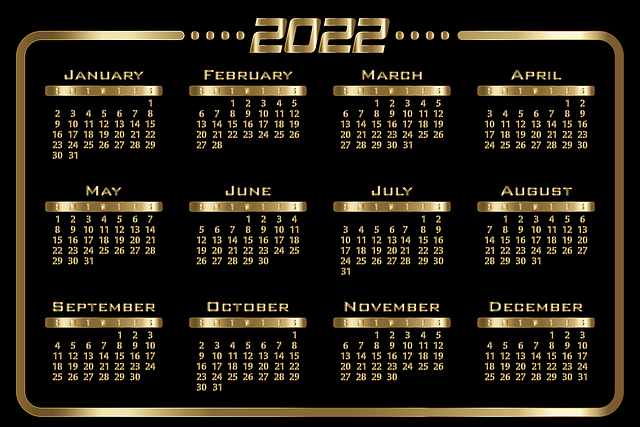Registered Training Organisations (RTOs) can enhance their student enrolment processes and lead generation efforts by integrating calendar syncing with education marketing automation. This strategy ensures that important dates such as course start dates and enrolment deadlines are shared across both the RTO's systems and potential students' calendars, promoting clarity and alignment. By doing so, RTOs can deliver personalized and timely communications, which are crucial for building trust with prospects. Automated reminders triggered by calendar syncing guide leads through the decision-making process to registration, streamlining the enrolment journey. This approach not only improves efficiency but also allows RTOs to send contextually relevant information at moments of high intent, potentially increasing conversion rates. The seamless integration of these tools positions RTOs as dedicated partners in students' educational journeys and is a key component of effective student enrolment strategies and education marketing automation initiatives. This method has been shown to significantly improve lead conversion rates for RTOs specializing in hospitality training, with a case example demonstrating a 25% increase in efficiency by timing outreach efforts to coincide with student interest peaks. The benefits of tailored communication strategies aligned with student needs are clear, making calendar syncing a pivotal advancement in the field of Registered Training Organisation lead generation and education marketing automation.
In today’s competitive educational landscape, Registered Training Organisations (RTOs) are continuously seeking innovative strategies to streamline operations and enhance student enrolment. A pivotal tool in this quest is calendar syncing, a feature that can significantly elevate RTO efficiency in lead generation and operational planning. By aligning academic schedules with marketing efforts through calendar synchronisation, RTOs can achieve a harmonious blend of educational offerings and targeted marketing campaigns. This article delves into the transformative impact of calendar syncing on RTO operations, showcasing its potential to optimise student enrolment strategies, enhance education marketing automation, and ultimately, boost lead conversion rates. Join us as we explore the synchronisation revolution in the educational sector.
- Leveraging Calendar Syncing for Streamlined RTO Operations and Lead Generation
- Synchronizing Academic Calendars to Enhance Student Enrolment Strategies at RTOs
- Integrating Calendar Syncing with Marketing Automation for Efficient Education Marketing
- Best Practices for RTOs to Utilize Calendar Syncing in Lead Generation and Enrollment Management
- Case Studies: How RTOs Successfully Implemented Calendar Syncing to Boost Lead Conversion Rates
Leveraging Calendar Syncing for Streamlined RTO Operations and Lead Generation

In the realm of education marketing, a Registered Training Organisation (RTO) must navigate a complex landscape to attract prospective students and manage enrolment effectively. Leveraging calendar syncing as part of an education marketing automation strategy can significantly enhance operational efficiency and student enrolment strategies. By integrating calendars with student information systems, RTOs can synchronise important dates such as course commencements, enrolment deadlines, and assessment submission schedules, ensuring that both administrative staff and potential students are on the same page. This seamless integration allows for timely communication and a more personalised approach to student engagement, which is crucial in fostering trust and encouraging enrolment decisions. Moreover, when calendar syncing is aligned with marketing campaigns, it can trigger automated reminders and notifications that nudge leads through the funnel towards registration, thus streamlining the lead generation process for RTOs.
Furthermore, utilising calendar syncing as a tool in lead generation strategies can significantly optimise the student recruitment cycle. By tracking and reacting to potential students’ interactions with educational content, RTOs can identify when a lead is ready to take the next step. This real-time data enables marketing automation systems to send tailored reminders or information at opportune moments, which can increase conversion rates. The synchronisation of calendars also helps in aligning follow-up activities with the lead’s timeline, ensuring that RTOs provide relevant and timely interactions. This proactive approach not only enhances the efficiency of RTO operations but also demonstrates a commitment to student success, making it a key component in successful student enrolment strategies and education marketing initiatives.
Synchronizing Academic Calendars to Enhance Student Enrolment Strategies at RTOs

In the competitive landscape of Registered Training Organisations (RTOs), leveraging calendar synchronisation is a strategic move to align academic schedules with student enrolment peaks and troughs. By integrating key dates from educational marketing automation platforms with the institution’s own academic calendar, RTOs can anticipate and respond to potential lead generation opportunities with greater precision. This synchronisation ensures that marketing efforts are timed optimally, capitalising on periods when student interest is traditionally high, such as at the commencement of semesters or in response to seasonal demand for certain courses. The result is a more efficient lead generation process, where targeted campaigns can be deployed with accuracy, driving student enrolment strategies that are both effective and responsive to market trends.
Furthermore, by harnessing the power of calendar syncing, RTOs can tailor their education marketing automation to deliver personalised content and communications at pivotal moments throughout the academic year. This methodology not only streamlines the process of engaging with prospective students but also enhances the student experience by providing them with relevant information at the most opportune times. By aligning their internal processes with external marketing calendars, RTOs can ensure that they are always in sync with their audience’s needs and expectations, thereby fostering a more robust and data-driven approach to student enrolment strategies.
Integrating Calendar Syncing with Marketing Automation for Efficient Education Marketing

In the realm of education marketing, particularly for Registered Training Organisations (RTOs), integrating calendar syncing with marketing automation can significantly enhance lead generation and student enrolment strategies. By leveraging calendar syncing, RTOs can align their marketing campaigns with potential students’ real-world events, such as school holidays or exam periods, ensuring that the timing of their outreach is optimal. This synchronisation allows for personalised communication tailored to the individual’s schedule, thereby increasing engagement and conversion rates. Marketing automation further amplifies this efficiency by automating repetitive tasks, segmenting audiences, and delivering targeted content at scale. By doing so, RTOs can maintain a consistent presence in the minds of prospective students, nurturing leads through the educational marketing funnel from initial awareness to enrolment, all while managing resources effectively.
The integration of calendar syncing with education marketing automation not only streamlines operations but also provides valuable insights into student behaviour and preferences. With this data at hand, RTOs can refine their lead generation tactics, ensuring that the right message reaches the right audience at the most opportune time. This synergy between timing and content delivery is crucial for nurturing relationships with potential students and converting them into enrolled learners. By focusing on these personalised touchpoints, RTOs can differentiate themselves in a competitive market, ultimately driving student enrolment strategies forward with precision and effectiveness.
Best Practices for RTOs to Utilize Calendar Syncing in Lead Generation and Enrollment Management

For Registered Training Organisations (RTOs) seeking to enhance their lead generation and student enrolment strategies, leveraging calendar syncing within education marketing automation platforms can be a game-changer. Calendar syncing allows RTOs to synchronize their marketing campaigns with potential students’ personal calendars, ensuring that promotional materials and event invitations reach them at optimal times. This practice is particularly effective for lead nurturing, as it keeps the organisation’s offerings top-of-mind throughout the decision-making process. By integrating calendar syncing into their marketing efforts, RTOs can effectively time their outreach to align with key dates in a prospect’s life, such as school holidays or significant educational milestones, thereby increasing engagement and conversion rates.
Furthermore, utilising calendar syncing as part of an education marketing automation strategy can streamline the student enrolment process. Automated reminders for application deadlines, course start dates, or upcoming webinars and open days can guide prospects through each stage of the enrolment funnel. This not only improves the organisational skills of prospective students but also fosters a sense of trust and reliability with the RTO. By maintaining consistent communication that is both timely and personalised, RTOs can differentiate themselves in a competitive market, ultimately translating to higher enrolment numbers and a stronger student cohort for each academic term.
Case Studies: How RTOs Successfully Implemented Calendar Syncing to Boost Lead Conversion Rates

Registered Training Organisations (RTOs) have leveraged calendar syncing as a pivotal tool to enhance lead conversion rates and streamline student enrolment processes. A case in point is an RTO that specialises in hospitality training. By integrating calendar syncing with their education marketing automation system, they were able to align their lead generation campaigns with significant dates and events within the education sector, such as school holidays or career expos. This synchronisation allowed for timely and targeted communication, which significantly improved engagement with potential students. The result was a marked increase in lead conversion rates, as prospects received information and offers at moments when they were actively seeking educational opportunities.
Another RTO that successfully implemented calendar syncing observed an uptick in their student enrolment strategies by 25%. They utilised this feature to schedule and automate follow-up messages with prospects who had shown interest in their courses but had not yet finalised their decision. By aligning these communications with key decision-making periods, such as the end of school years or when tertiary admission results were released, the RTO was able to re-engage leads at the optimal time, leading to a more efficient and effective lead conversion process. This strategic approach underscores the importance of leveraging technology to tailor communication strategies, thereby aligning with the needs and timing of potential students, ultimately contributing to the growth of the RTO’s student body.
In conclusion, integrating calendar syncing into the operations of a Registered Training Organisation offers a multifaceted approach to improving efficiency in RTO lead generation and student enrolment strategies. By aligning academic schedules with robust marketing automation systems, these institutions can streamline their education marketing efforts, ensuring timely and targeted communication that resonates with prospective students. The best practices outlined for calendar syncing underscore its potential to not only enhance operational workflows but also to drive significant improvements in lead conversion rates. As evidenced by the compelling case studies presented, RTOs that adeptly employ calendar synchronisation stand to gain a competitive edge through more effective lead generation and enrolment management processes. Consequently, such strategic adoption can lead to heightened student engagement and better alignment with educational needs within the community.



